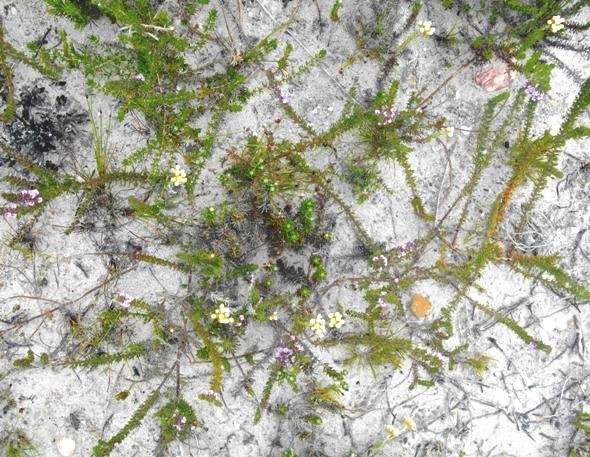Delicate revival after a veld fire

Author: Ivan Lätti
Photographer: Ivan Lätti
After veld fires the seeds and surviving stumps of resistant perennial plants wait for some rain and the new growth season to start over again. Out of the forlorn dead sand, among ageing strewn around cinders, the new leaves sprout. In a year’s time one may have to look carefully among the exuberant foliage for the signs of the last conflagration. This is how the forerunners put out leaves and roots to “pave the way” for everything and its leaf-mate to return and luxuriate.
Natural fires caused by lightning account for a small fraction of the hundreds of millions of hectares of vegetation burnt annually on earth in our time. People do the rest. The occasional fire in natural forest, bush, scrub or grass is a beneficial component of responsible veld management. Too frequent fires may cause irreversible damage to vegetation and biodiversity overall. Opinions differ as to how many years a good fire cycle is, probably because of which plants are being studied, what biomass exists on the particular land and what the soil and climate entail.
This photo was taken in fynbos near the south coast, east of Bredasdorp. When this type of vegetation is fully recovered it will be dense, diverse and support many small mammals, birds, insects and other life forms. It will be hard to walk through; the hiker will most of the time not see his or her own feet as they negotiate this form of fynbos with effort. So much better than walking across burnt veld, dead sand.

